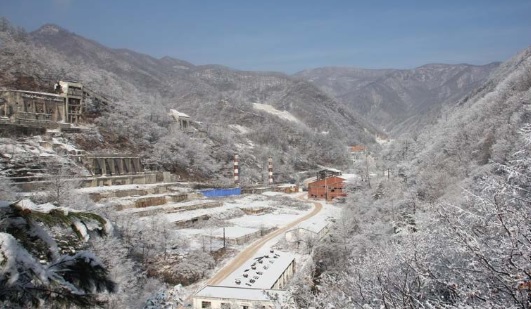Almonty Industries has commenced drift development at the Sangdong tungsten mine in the Republic of Korea, and is on course to start full-scale mining in early 2020.
The development of some 4,000 meters of 4.5 m x 4.5 m transportation drifts, loading points, passing bays and cross-cuts connecting to orebodies is planned to be completed in 18 months.
Gangwon Mining is the contractor undertaking the work under the mine development contract executed on April 23, 2018, with all the permits for development previously obtained and the required registration of licensed personnel for health, safety, environment, explosive treatment, mechanical and electrical supervision completed.
The official ceremony for the first blast was held at Sangdong on September 26. Promptly after, the first blasting and subsequent development work began inside the Alfonse D portal.
Almonty’s Chairman, President and Chief Executive Officer Lewis Black said: “The beginning of the mine development work is an important and meaningful step to Almonty for bringing one of the largest and lowest cost tungsten mines in the world back into production after 25 years since its closure in 1993.”
Black added: “We are particularly pleased to have engaged Gangwon Mining, the most experienced and competitive mining contractor in Korea with no record of safety incidents over 20 year.”
The official commencement of underground development work will also change the status of the Sangdong mine to an operating mine, thus allowing the mine to be eligible for diverse local governmental support and subsidies provided by the mining promotion institutions such as the Korea Resource Corporation and the Mine Reclamation Corporation.
This will widen the spectrum of government subsidies significantly, expanding from the previously announced ongoing endowment for the pilot plant which the Korea Institute for Geoscience and Mineral Resources has provided, with the target completion of the pilot plant expected by the end of December.
The completion of drift development and mining of ore in intersecting areas together with the completion of the processing plant, which is planned to be commissioned in the June quarter of 2020, are expected to enable the Sangdong mine to start producing concentrate in the middle of 2020.
The mine is expected to annually produce some 230,000-240,000 metric tonne units when fully ramped up.
The Almonty Korea Tungsten mine was the powerhouse of the economy in the post-Korean War decades, contributing more than 50% of the country’s export revenue as one of the largest global tungsten producers. This mine, along with almost all other metallic mines in South Korea, closed in the 1990s primarily due to low commodity prices, at a time when South Korea was emerging as a manufacturing powerhouse.











